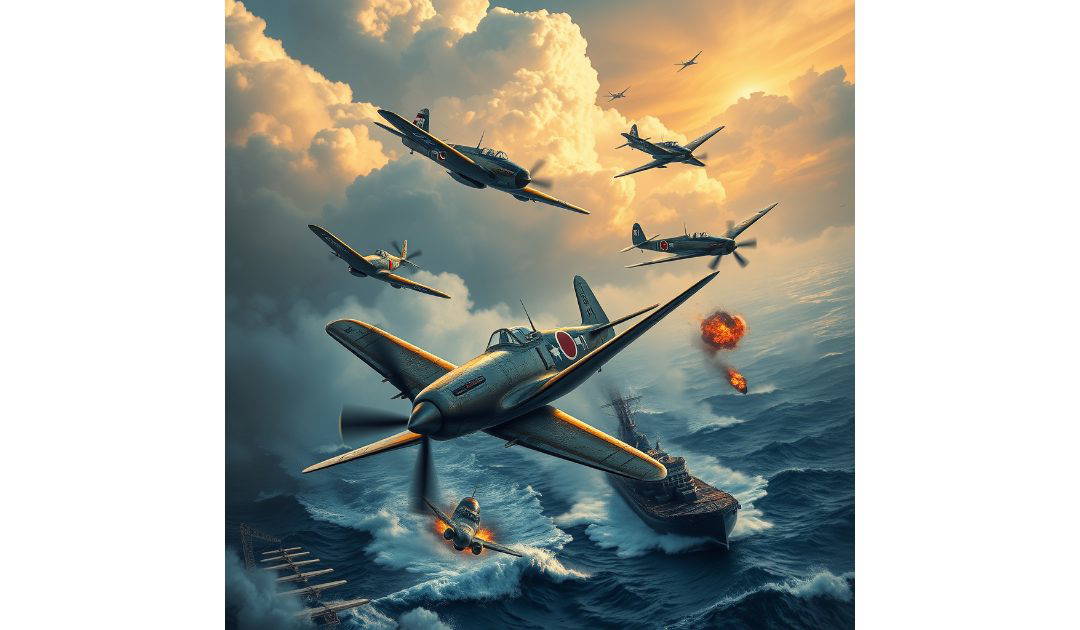The 6th of June is, of course, famous for D-Day and the opening of Operation Overlord. My father landed in Normandy on D-Day +1, as I have already posted. But another vitally important battle was waged in the Pacific Ocean from the 4th to the 7th of June, 1942, the Battle of Midway.
The Battle of Midway was a crucial turning point in the Pacific Theatre of World War II. Taking place just six months after the attack on Pearl Harbor, it marked a pivotal moment in the naval war between the United States and Imperial Japan. This fierce confrontation would change the course of the war and highlight the importance of intelligence, strategy, and sheer resilience.
In the early months of 1942, Japan sought to extend its defensive perimeter in the Pacific by capturing Midway Atoll, a small cluster of islands roughly 1,300 miles northwest of Honolulu. This strategic location was vital for controlling the Pacific and launching further operations against the United States. Midway’s significance lay in its potential to serve as a staging ground for future Japanese attacks, thus threatening American security in the Pacific.
Admiral Isoroku Yamamoto, the mastermind behind the Pearl Harbor attack, orchestrated the Midway plan. He aimed to lure and destroy the remaining American aircraft carriers, thus securing Japanese dominance in the Pacific. However, the Japanese were unaware that American codebreakers had already deciphered significant portions of their communication. This intelligence breakthrough gave Admiral Chester W. Nimitz, Commander in Chief of the Pacific Fleet, the upper hand in anticipating Japanese movements.
Armed with this critical information, Nimitz devised a defensive strategy that hinged on surprise and calculated risk. The United States had three carriers at its disposal: USS Enterprise, USS Hornet, and USS Yorktown, the latter of which had been hastily repaired after damage sustained during the Battle of the Coral Sea. Nimitz positioned his forces strategically northeast of Midway, ready to ambush the Japanese fleet.
On 3rd June, a PBY Catalina flying boat spotted the approaching Japanese invasion fleet, confirming American expectations. The next day, the battle commenced with a pre-dawn air attack by Japanese planes on Midway’s installations. Despite heavy bombing, the American garrison on Midway, bolstered by Marine Corps personnel, held firm, repelling the initial onslaught.
The pivotal moment came on 4th June, when American carrier-based aircraft launched several waves of attacks against the Japanese fleet. While the initial torpedo bomber assaults failed disastrously, leaving many American aircraft destroyed, they inadvertently drew Japanese fighters away from their ships. This diversion allowed American dive bombers to arrive unchallenged above the Japanese carriers.
In the space of five minutes, the American dive bombers inflicted catastrophic damage on three of Japan’s frontline carriers: Akagi, Kaga, and Soryu. The bombs penetrated the decks, igniting fuel and ammunition, leading to uncontrollable fires. By the end of the day, these carriers lay abandoned, burning wrecks in the Pacific. Another carrier, Hiryu, launched a counter-attack, severely damaging the USS Yorktown, but was itself destroyed the following day.
The loss of four carriers, along with hundreds of aircraft and experienced pilots, dealt a severe blow to Japan’s naval strength. The battle not only halted Japanese expansion in the Pacific but also shifted the balance of naval power towards the United States. It showcased the critical role of intelligence and carrier warfare, elements that would define naval engagements for the remainder of the war. Moreover, the Battle of Midway demonstrated the resilience and determination of American forces. Despite being outnumbered and initially outgunned, the U.S. Navy’s ability to turn the tide in its favour was a testament to effective leadership and the spirit of its servicemen.

